Everyone enjoys sports with comprehensive and intelligent analysis. But have you ever wondered how broadcasters, sprots businesses, and teams make the game so exciting for us? With all the advanced tools, equipment, and strategies, every game is becoming more optimistic. But how it is all happening?
Today, big data is playing a significant role behind the scenes in making these events more competitive and interesting for viewers.
People generated 2.5 quintillion bytes of data per day in 2022. As people generate more data, individuals gain access to information that helps them make better decisions. As a result, it is not surprising that data is becoming important in every business. Sports analytics is one such topic that is blossoming in this new era.
For a long time, coaches and front offices kept data analysts at arm's length. Today, it is commonplace for data analysts to fill positions on sports teams. As players and management look for whatever statistical advantage they can get, the importance of sports analytics appears to be expanding.
Analytics has also found its way into how consumers consume sports. Off the field, experts, broadcasters, and fans rely on statistics all the time, whether it's to deliver play-by-play breakdowns, make forecasts, or make power fantasy league judgments.
What is sports analytics?
Sports analytics uses data to improve athletic performance and business operations. Athletic performance and business health to maximize a sports organization's procedures and results.
On-field data helps teams improve game strategy & diet plans to boost athletes’ performance.
Off the field track ticket sales, develop marketing campaigns, and save operating expenses. Betting businesses and fans have also gotten involved. Sports betting analytics organizations use data to assess specific game outcomes occurring.
Data analytics is essential in today's industry. Several firms have used data analytics to help them improve their performance. Businesses make better business decisions and lower expenses by incorporating data analytics.
Expansion of SportsTech through smart data analytics
Newspapers publish box scores, baseball cards display players’ career stats, and radio commentators use data to add context to their commentary.
Sports analytics didn't exist until 2002, when Oakland Athletics general manager Billy Beane put it together a squad of lesser-known players that came close to winning the World Series.
His method of maximizing a squad through statistical analysis became known as "Moneyball" and became the way other teams functioned.
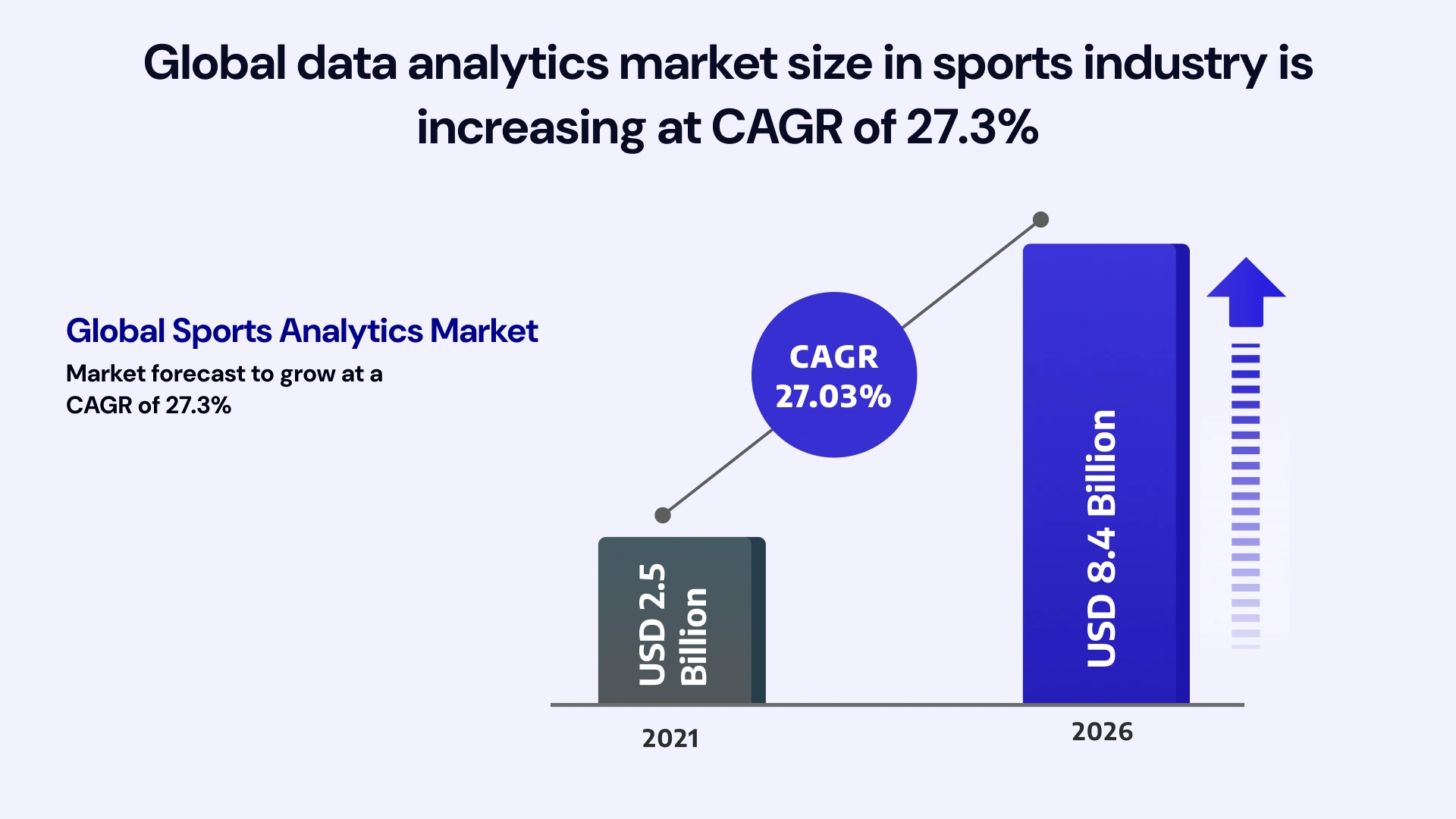
As investment in the global sports market rises, athletic teams invest in sports data analytics to stay competitive. Sports analytics industry will reach $4.5 billion by 2025.
Analytics has also influenced how viewers consume sports. Fans may visit websites such as FiveThirtyEight for data-driven sports news and their favorite team's chances of winning a title.
In football, broadcast commentators break out a player's breakaway speed, whereas in baseball, they break down the launch angle after a home run. It's even used to forecast the greatest players in fantasy sports.
Applications of data analytics in different sports
Although the underlying goal of sports data analytics is universal to get a competitive edge via statistics and data analysis. Different sports use different approaches to gather and analyze data for their sport.
1- Data analytics in soccer
Teams use sophisticated analytics to assess and enhance their performance by leveraging;
- match player performance statistics
- video footage
- predicted goals and assists
- data signals.
Teams can identify areas for growth and choose the best players for a specific playstyle.
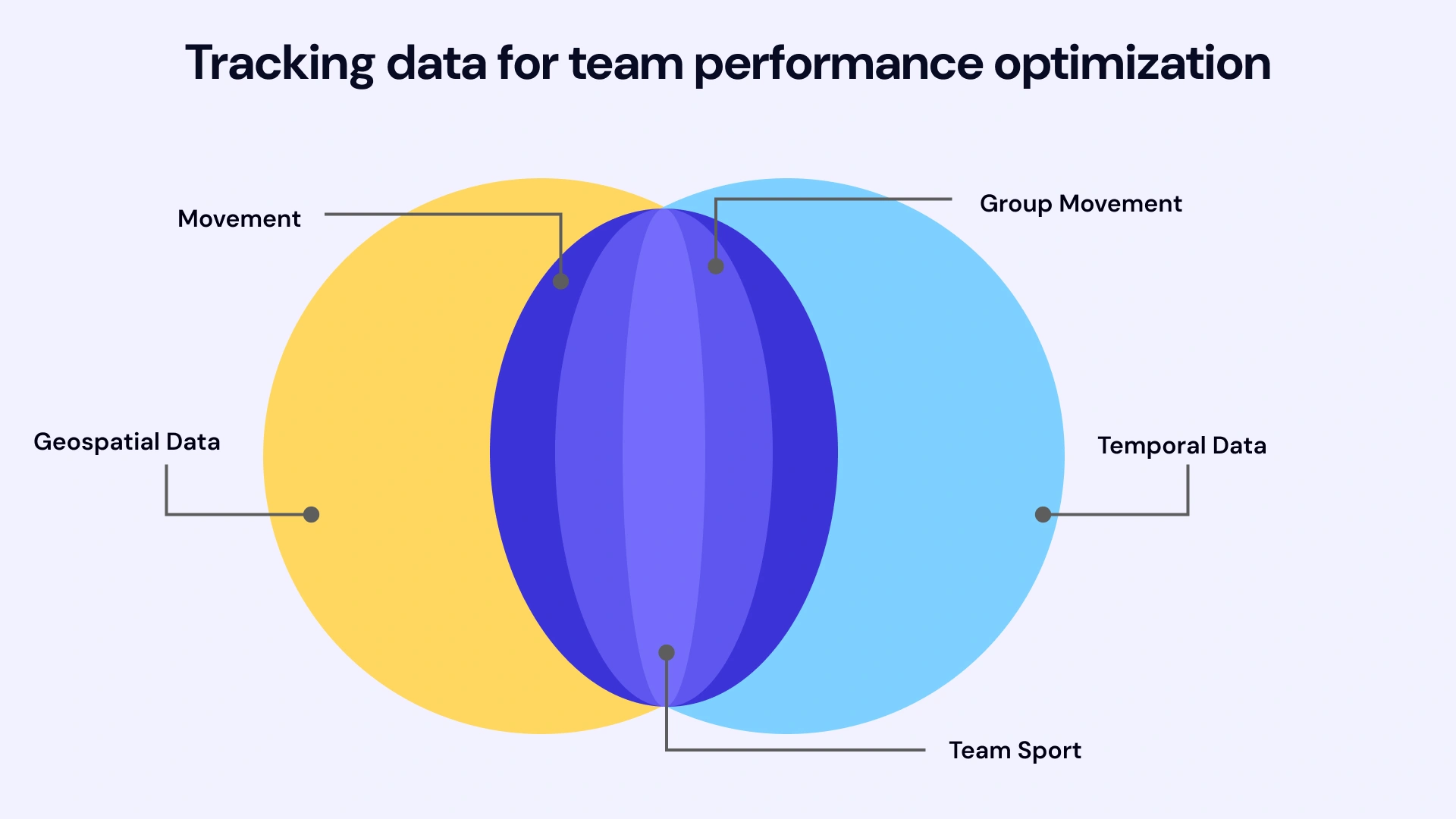
Teams can study their opponents' performances and discover flaws using the same techniques to assess match and player performance. Companies use Data to give customized strategies and game plans to teams.
2- Data analytics in cricket
To get a competitive advantage, cricket, like many other sports, has adopted data analytics. Organizations are using data analytics to improve their performance, optimize their strategy, and make better decisions.
Teams use data analytics to improve player development and training. They analyze data to identify areas where players create individualized training programs for each player.
Also Read: A Complete Guide for Sports Betting App Development
3- Data analytics in Olympics
Data analytics has entered all sports as teams use new information to improve their future performance.
While the degree of data collected during Tokyo 2020 was the most advanced to date, the unique circumstances of this Games edition. It took place during a worldwide epidemic had an influence on the data.
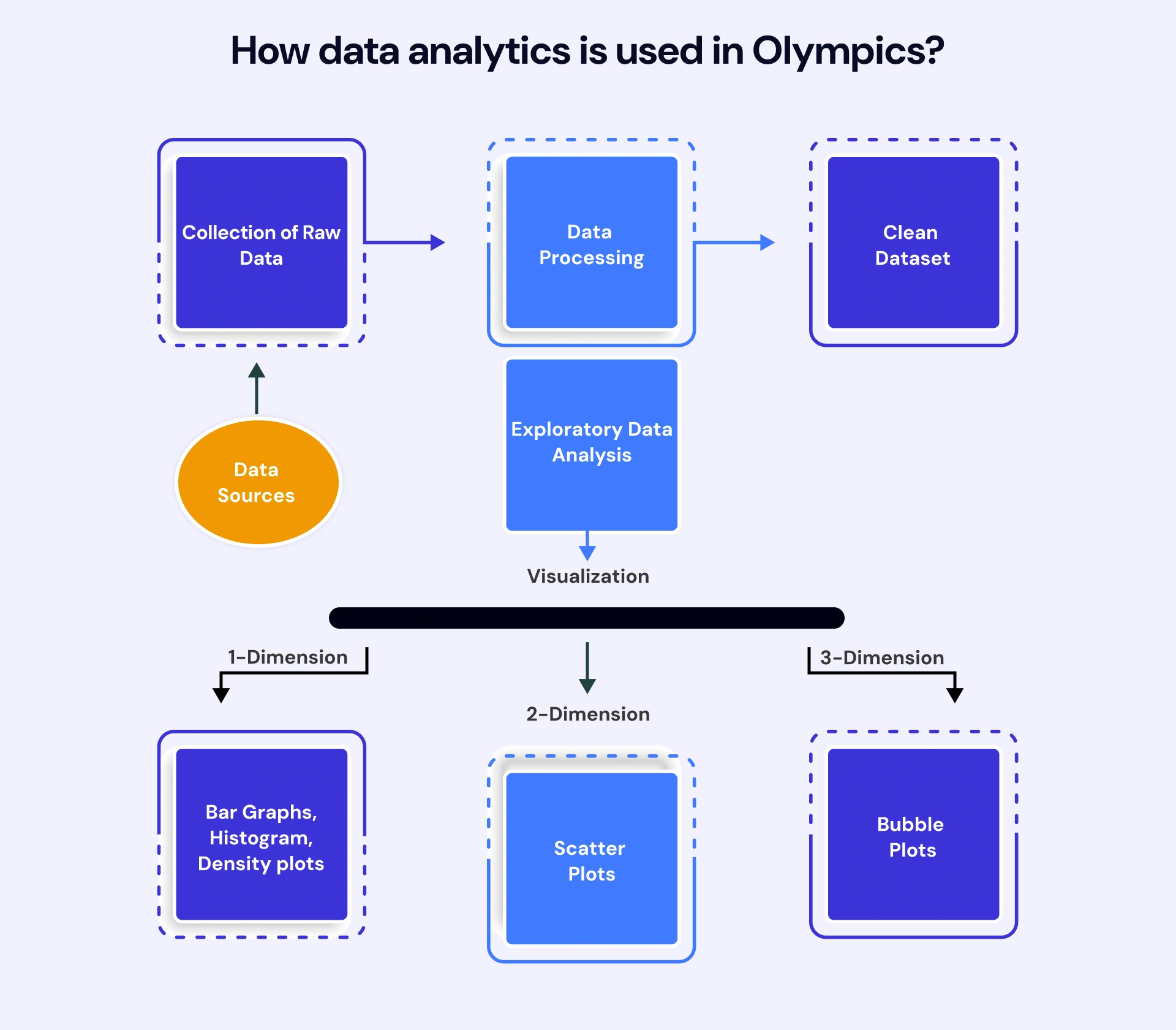
To put the Tokyo data into context, the IOC and Paris 2024 conducted a comparison of figures with prior Games editions (Rio 2016 and London 2012). This research found that the numbers of some of the certified demographic categories in Tokyo were quite like prior Games editions, while the variances for others were not that large.
4- Data analytics in basketball
The NBA (National basketball association) is now experiencing a huge change. Almost all NBA front offices now have data analysts on staff. Data analytics is permeating every aspect of the game, from rookie scouting to finding undervalued players. It calculates efficient shots and the emergence of the three-point shot.
Most NBA clubs use data analysts. These data analysts collaborate with coaches and players to optimize players' skills and, like "Money Ball," find undervalued players. NBA players use wearable devices to track their health, avoid injury, and manage tiredness.
Beneficial impacts of data analytics in sports
Every major sport has gone through an analytics metamorphosis. Sports clubs are eager to get a competitive advantage through data analytics. They are investing in recruiting sports data scientists to examine.
1- Decision-making in game planning
Data-driven insights have continued to affect game strategy and decision-making in sports throughout the last year. During matches, coaches and analysts now have access to real-time data, allowing them to make educated judgments.
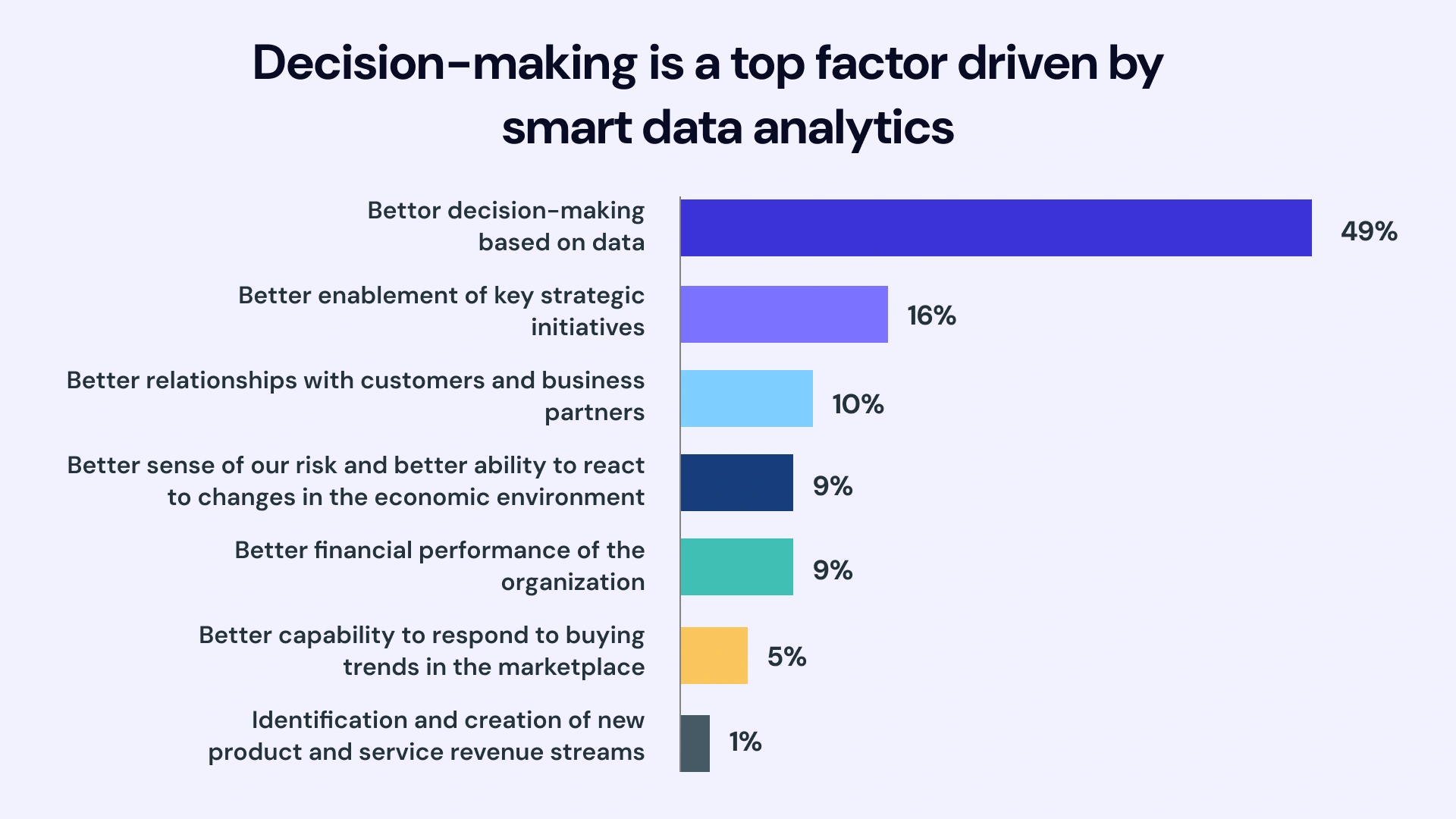
Teams can create ideal plans by analyzing opponent trends, tracking player placements, and assessing game scenarios using sophisticated analytics. This has resulted in the creation of prediction models that can foresee game results and player performance. It boosts strategic planning and preparation.
2- Enhancing customer engagement
Through app logins and online video views, sports organizations may discover trends in digital engagement to determine what and when people are watching. Augmented reality is being used to provide more immersive experiences.
They may use analytics to engage followers through social networks by mining sentiment from social media feeds. Social media is an excellent marketing platform for university teams looking to engage with millennials and sell tickets through data-driven campaigns.
3- Create quality watching experience
Anyone who has watched a sport for a long time would be familiar with how sports broadcasting has changed over time. Sports commentary, for example. It has progressed from calling the action to teaching viewers with data for immersive experience.
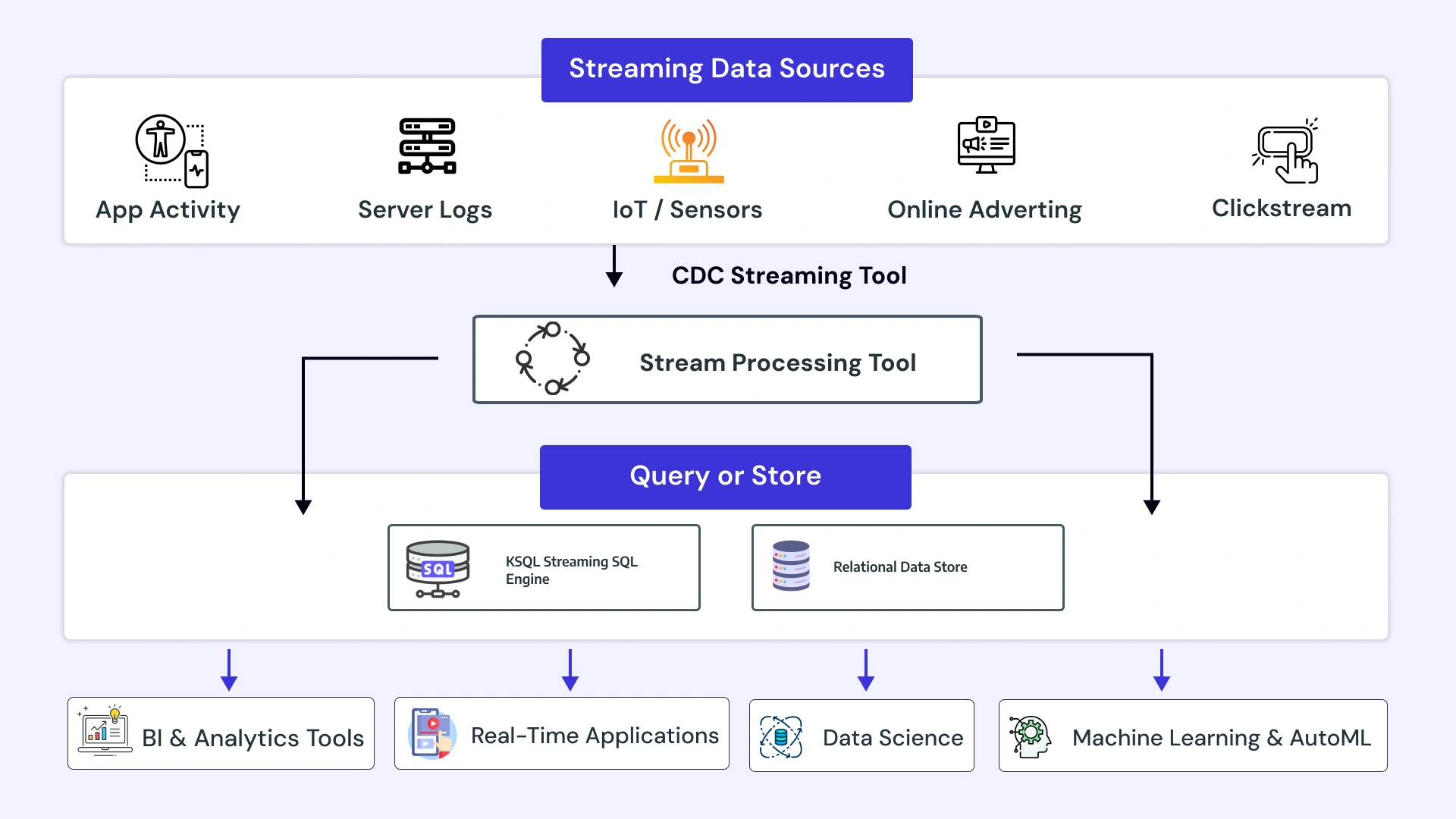
Broadcasters are now even hiring statisticians to deliver information to viewers for them to comprehend the context of any performance. Basic graphical components now include contextual information to assist viewers in grasping the significance of each occurrence.
4- Players’ analysis to optimize performance
Player performance analysis is one of the most visible areas where data analytics is popular. Advanced technology allows clubs and coaches for checking individual player skills and workload.
GPS trackers, accelerometers, and heart rate monitors, for example. They have become standard among athletes. They offer several data about their physical qualities, movements, and physiological responses.
5- Data-driven talent recruitment
Data and analytics are becoming important in the identification and recruiting of talent. Analytics enables clubs to compare player performance across leagues and competitions. It allow for more informed and data-driven recruiting decisions.
Data from monitoring systems, performance measurements, and sophisticated statistics help in discovering rising talent. They also help in analyzing their potential fit within certain teams or systems.
How VLink can help in deploying data analytics for your sports business
Big data has transformed several sectors in recent years, and it is no stranger to sports. It has improved players' performance, broadcasters' fan engagement, and coaches' games techniques. Marketing data analytics also plays a significant part in this process.
Dive into data analytics to see how a few key insights may revolutionize sporting events and athletic performance. Big data analytics play an important role not only in sports, but also in business. You can have a professional analytics environment at your fingertips with VLink’s data analytics for all your business needs.





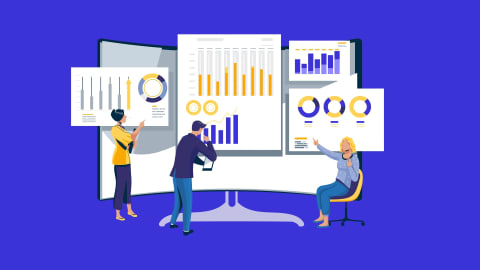


 Shivisha Patel
Shivisha Patel

















